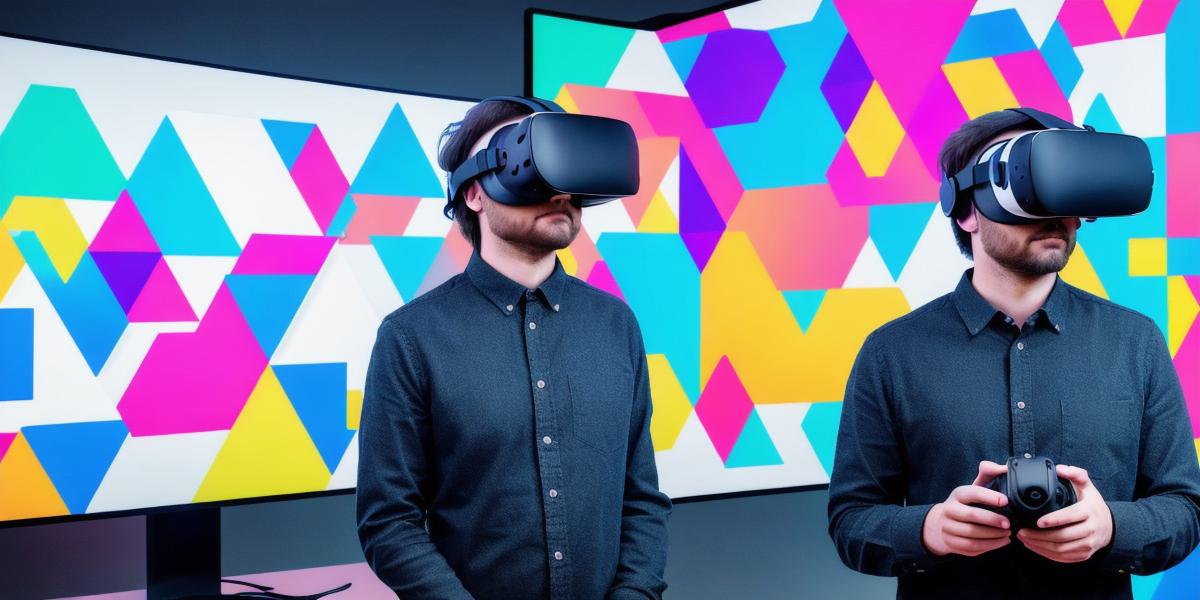Simulated reality (SR) is an emerging technology that has the potential to revolutionize how we interact with digital environments. SR allows us to create a virtual world that mimics the real world, giving users the feeling of being in a different environment. This technology is being used in various fields, such as gaming, healthcare, and education. In this article, we will explore the definition of simulated reality, its benefits, and how it can be used by developers.
What is Simulated Reality?
Simulated reality is a computer-generated environment that replicates real-life experiences in a virtual world. SR technology uses sensors, cameras, and algorithms to create an immersive experience for users. SR can be accessed through various devices such as headsets, smartphones, and computers.
One of the key features of SR is its ability to provide users with a sense of presence in a virtual world. Users can interact with objects and other people in the virtual environment, making it feel like they are in a real-life setting. This technology has been used in various fields, such as gaming, healthcare, and education.
Benefits of Simulated Reality
SR technology provides several benefits to users and developers. Here are some of the key benefits:
- Improved learning outcomes: SR can be used to create immersive learning experiences that allow students to interact with virtual objects and environments in a way that is not possible in real life. This can lead to better learning outcomes and a deeper understanding of the subject matter.
- Enhanced patient care: SR technology can be used in healthcare to simulate surgical procedures, allowing doctors to practice and improve their skills before performing them on real patients. This can lead to improved patient outcomes and reduced risk of complications during surgery.
- Increased engagement and motivation: SR can be used in gaming and other interactive applications to increase user engagement and motivation. This can lead to more active participation and a greater sense of accomplishment.
- Cost-effective training: SR technology can be used for cost-effective training in various fields, such as aviation and military. This can save organizations money on traditional training methods and provide a safer and more efficient learning experience.
How Developers Can Use Simulated Reality
Developers can use simulated reality technology to create immersive experiences for users in various fields. Here are some ways developers can use SR:
- Gaming: SR can be used to create realistic and immersive gaming experiences that allow players to feel like they are in a different world. Developers can use SR to create virtual environments, characters, and objects that are indistinguishable from the real thing.
- Healthcare: SR technology can be used to simulate surgical procedures, allowing doctors to practice and improve their skills before performing them on real patients. This can lead to improved patient outcomes and reduced risk of complications during surgery.
- Education: SR can be used to create immersive learning experiences that allow students to interact with virtual objects and environments in a way that is not possible in real life. This can lead to better learning outcomes and a deeper understanding of the subject matter.
- Training: SR technology can be used for cost-effective training in various fields, such as aviation and military. This can save organizations money on traditional training methods and provide a safer and more efficient learning experience.
Case Studies and Personal Experiences
There are many real-life examples of how simulated reality technology has been used to create immersive experiences for users. Here are some examples:
- Gaming: The virtual reality game "Beat Saber" uses SR technology to create an immersive gaming experience that allows players to feel like they are in a different world. Players use VR headsets and controllers to interact with virtual objects and environments, making it
